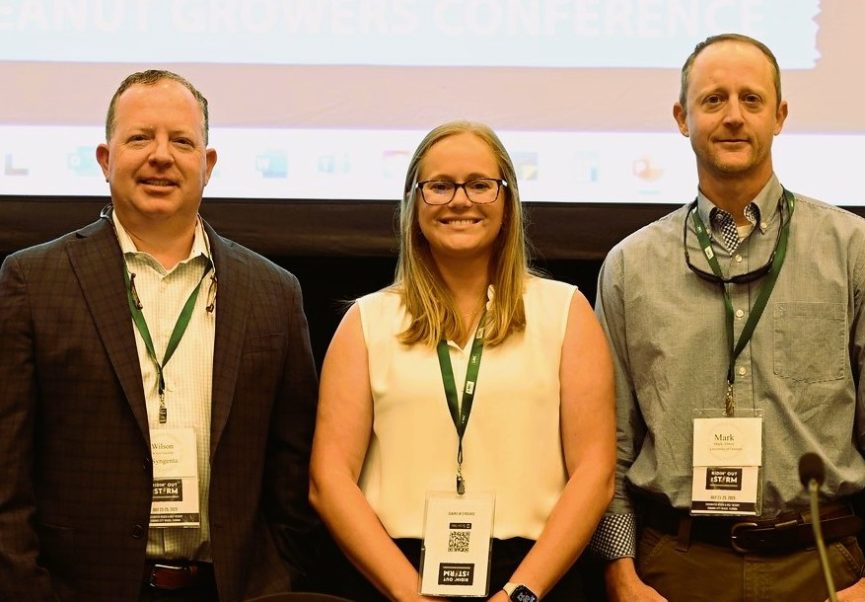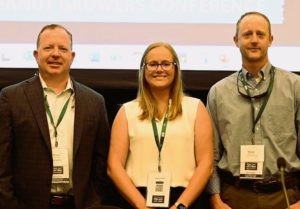The first general session panel at the 2025 Southern Peanut Growers Conference focused on the pesticide strategy recently finalized by the Environmental Protection Agency and the ramifications for the peanut industry.
The panel featured Dr. Taylor Singleton, University of Georgia; Dr. Mark Abney, University of Georgia; and Dr. Wilson Faircloth, Syngenta.
Dr. Singleton says EPA has developed a new framewors for evaluating pesticides in regards to endangered species compliance.
“So right now there’s a lot of conversation and new regulations that have come up recently regarding endangered species and pesticide use. And so we’re helping growers understand these new regulations. What’s going on, what changes we’re going to see on labels moving into the future, but also trying to help growers understand,” she said.
Dr. Abney says at this point, all of the good soil insecticides have been banned and that is a challenge for the industry to find replacements. “It costs so much, it takes so long, and then for soil insecticides to be good, they need to be broad spectrum which means kill different insects, they have to last a long time, which has long residual and those are not usually things that help you get registration with EPA. They want more selective products that don’t last as long,” said Abney.
Representing the crop chemical industry, Faircloth talked about the process of getting a new product to market. “From a basic manufacturer’s perspective like Syngenta or any other, I wanted to paint a picture of a couple of things. Number one, let’s talk about the cost of doing business and the time that it takes is this extremely long time, at least 10 years now from discovery to being able to sell a product. The costs are approaching, you know $300 to $400 million per active ingredient to get those into the marketplace and then of course, negotiating the regulatory hurdles is a big part of what we do in a big part of that cost as well.”
Listen to interviews with all of the panelists below.
 Dr. Taylor Singleton, University of Georgia (3:26)
Dr. Taylor Singleton, University of Georgia (3:26)
 Dr. Mark Abney, University of Georgia (5:04)
Dr. Mark Abney, University of Georgia (5:04)


